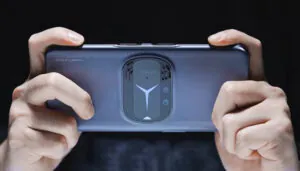Gaming Phones Are The Dimming Beacon Of Smartphone Designs

Recently, Lenovo confirmed that it was putting a stop to its own Legion line of gaming phones. This leaves only a couple of players left in this corner of the smartphone market – ASUS with its ROG Phone line, Nubia with its RedMagic series, and the Black Shark phones. Should these decide to do the same in the near future, then their departures would seemingly spell the end of gaming phones. Which is quite the progression from just a few years ago, when the industry gave the impression that it was the bandwagon that brands were in a rush to jump into.
If it does come to that, then it would be quite the blow for the wider smartphone industry, but not for the reasons you’re probably expecting. I’m not trying to say that gaming phones are not a niche market, because it absolutely is. But if it ever goes away, then the industry would be losing a major source of inspiration as a whole.

If you remember this article from two years ago, our features editor Heirul lamented the homogeny of smartphone design, with gaming phones and special edition models being the exception. And especially in the case of the former, it’s sometimes not just form, but also function.
The best example that comes to mind are the physical triggers on the Black Shark phones, and to a similar extent, virtual ones on the ROG Phone line’s AirTriggers, among others. These are great for those who have experienced having hardware shutter buttons on smartphones, but don’t want to get the very pricey Sony Xperia devices of today. And it’s features like these that will be going away once and for all if, or when, gaming phones as a whole fade away. Then we’ll be stuck with bland smartphone designs once again – save for occasional special editions.

Before smartphones came about and took over the industry, the realm of feature phones also had its its own share of uninspired designs. That being said, looking for something that stands out at the time wasn’t as difficult. Names like Nokia and Sony Ericsson (now just Sony) were always trying to push the design boundary with wacky features that not only helped their products stand out, but were also functional.
For the former, standouts include the likes of the Nokia N90 and N93, with their camcorder-esque take on the mobile phone. As for the latter, basically all of their Walkman phone models would qualify, with their having physical controls for music playing apps. Anecdotally, it’s been over a decade since I last used the Sony Ericsson W902, and I still miss it dearly until today.

Ironically, even modern feature phones these days are only adopting the simple candy bar design with nothing distinct about them. And yet, they seem to be going through a resurgence, even if only to help addicts avoid social media.
These days, gaming phones seem to be playing the same role as the gimmicky feature phones of old – going beyond the established to see what can be both help it stand out, and is also useful. Some of these have, and are getting adopted by powerful flagships that don’t use the gaming moniker, such as vapour chamber cooling. Others, like surrogates for shoulder buttons on controllers, look to be sticking pretty well, despite them not translating to the mainstream just yet.

But in the same vein, for the survivors of the gaming corner of the smartphone market, this kind of smartphone design specialisation is what will keep it alive. Some of these may evolve into more adopted features, and gaming phone makers will have to innovate again to find the thing that keeps it unique. And the vicious cycle continues.
Performance wise, smartphones are getting more and more powerful, and their chipsets usually come from the same usual suspects anyway, so that’s no longer a selling point for gaming phones. The same can be said for cooling tech as well. So if or when mainstream lines of smartphones start adopting surrogate shoulder buttons, the existence of gaming phones will be on the line again.

There will come a time when people will start thinking that gaming phones are boring again, and it will be the challenge that both ASUS, Nubia and Black Shark will have to overcome. Though that’s not saying much considering the differentiating factor this days between mainstream flagship smartphones is whether the camera combo at the back is arranged like the Android kebab or meatball menus, or a kitchen stove. But while smartphones in general will not be going away anytime soon, the same can’t be said about specialised gaming smartphones specifically.
Perhaps Lenovo thought the same and decided it’s not worth the long term investment when the company decided to quit the gaming phone space – something that gaming peripheral maker Razer may have realised all those years ago after releasing its second phone. But more worryingly, there’s a chance that the same assessment could cross the minds of ASUS, Nubia and Black Shark sooner or later.
If it ever comes to this, not only would it bring down the curtain on this niche corner of the smartphone market, but also on smartphone design evolution. And that would be a pretty sad day for the industry. But on the flipside, this probably beats the alternative of mainstream phones starting to squeeze rainbow lights in every possible nook and cranny.
And on that bombshell…
The post Gaming Phones Are The Dimming Beacon Of Smartphone Designs appeared first on Lowyat.NET.
